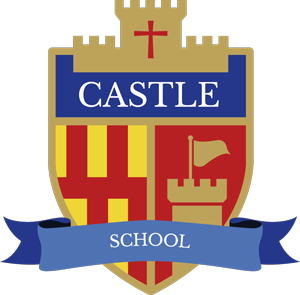Using what we see to help understanding
We all use the easiest way to help others to understand. For example, when ordering a drink in a busy café/pub you might gesture drink to your friend to ask if they want a drink, rather than shouting across the room.
You can help your child to understand by showing them things as you talk.
Making your speech visual will really help. You can do this by:
- Gesture
- Makaton signing (see Makaton resources in Helping your Child to Communicate)
- Pointing to things around us
- Pointing to pictures
- Using other forms of communication e.g. objects of reference, communication boards, books, communication aids etc
Children often start to understand what objects mean first. When they see their cup they know that they are going to have a drink.
Learning what photos symbols or written words mean follows later.
Your child may work on developing their understanding photos, pictures, symbols or even the written word, as part of their school work but objects, gesture and signing will always be the easiest to understand.
We want to avoid frustration by giving them the easiest way to understand.
Talk to your child’s Speech and Language Therapist and/or teacher for help about how your child understands best.
The importance of modelling can be seen demonstrated in this Youtube video...
This happens because the functionality/content marked as “Google Youtube” uses cookies that you choosed to keep disabled. In order to view this content or use this functionality, please enable cookies: click here to open your cookie preferences.
Providing routine and structure
Routines help us all to understand what is happening in our day.
Routines can be as simple as regularly showing your child their shoes before getting ready to go outside. Children in a good routine may not have to understand any spoken language to be able to join in by going to fetch their shoes and go the door before going out.
To help them with new routines or to change their routines we can use pictures or objects.
Now and next boards are the simplest visual timetable we can use, that can be used to support your child to carry out tasks which they find less motivating.
How to use a now and next board
This happens because the functionality/content marked as “Google Youtube” uses cookies that you choosed to keep disabled. In order to view this content or use this functionality, please enable cookies: click here to open your cookie preferences.
Download a Now and Next Board to use at home
Breaking down spoken language
You can also support your child to understand what you are saying by keeping your message simple, using short sentences and slowing down what you are saying. Also repeat important words while playing with your child.
Asking the right question
Does your child ignore you?
Children often do not answer our questions. They may be ignoring us or it may be because we are not asking the right question. Some questions are much easier to answer than others.
EASIEST (Level 1)
- “What is that?”
- “What do you want?”
- “What can you see?”
- “Find one like this”
- “What is — doing?”
- “Is it a —?” (yes/no response)
These are all questions that are about the things immediately around us.
A LITTLE HARDER...(Level 2)
- “Find something that can … e.g. cut”
- “What is happening in this picture?”
- “Who is …. e.g. jumping?”
- “Where is the…?” (requires a location response e.g. “under the table” not just pointing
- “Find something that is …(red) and …(spiky)”
- “How are these different?”
- “Which one is … (a fruit)?”
These are all questions that need your child to be able to talk about how things can be grouped together by what they look like, sound like, feel like, are used for, where they are kept etc. Usually children at this level will need pictures or objects around them to help them talk.
SLIGHTLY HARDER STILL (Level 3)
- “What will happen next?”
- “How do you think he feels?”
- “How do I make… (a sandwich)?”
- “How are these the same?”
- “What is a …?” (definition)
To answer these questions a child needs to be able to talk about things away from the ‘here and now’. Your child will start to think about their own experiences and use them to make simple guesses about what might happen in a situation. They will need to be able to think about simple familiar events and the order things might happen in with fewer pictures to help.
HARDEST (Level 4)
- Predicting changes: “What will happen if…?”
- Solutions: “What should we do now?”
- Causes: “How did that happen?”
- Justifying: “Why can’t we …eat ice-cream with a knife and fork?”
- Explanations: “How can we tell he is sad?”
These questions all need children to be able to think about the past and future and use their own experiences. Lots of our children find them hard.
So when we next ask a question and are ignored, try asking a simpler question.
Example 1
There is a loud crash and a cup is lying on the floor in pieces.
Rather than asking: "How did that happen?" or "Why did you do that?"
Try asking: "Who broke the cup?" or "What did you do?"
Example 2
You're reading a book with your child, for example, The Gruffalo. While reading, rather than asking: "Why is he holding the mouse?" (Level 4), ask:
- "Who is the Gruffalo holding? (Level 2)
- "What's that?" while pointing to something like the Gruffalo's teeth (Level 1)
- "How does the mouse feel? (Level 3)
(Based on work by Blank, M., Rose, S. A. & Berlin, L. J. (1978) The Language of Learning: The Preschool Years. Orlando: Grune & Stratton, Inc.)

